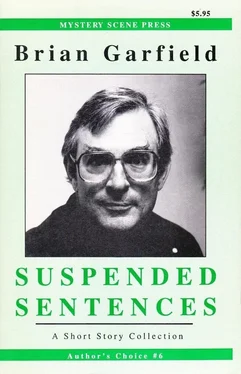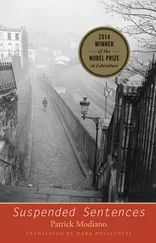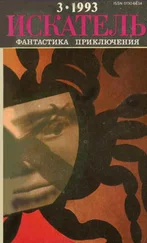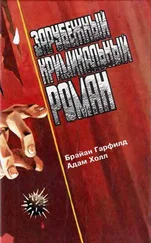She had never liked him much. He and Briggs had got along all right, but she’d always found Eric an unpleasant sort. It wasn’t that he was boorish; hardly anything like that. But she thought him pretentious and totally insincere. He’d always had that air of arrogant self-assurance. And the polish was all on the surface; he had the right manners but once you got to know him a little you realized he had no real understanding of courtesy or compassion. Those qualities were meaningless to people like Eric. She’d always thought him self-absorbed and egotistical to the point of solipsism; she’d felt he had cultivated Brigg’s friendship simply because Eric felt Briggs could help him advance in the department.
Eric had been good at toadying up to anyone who could help him learn the arts of politics and ambition. Eric had always been very actorish: he wasn’t real — everything was a role, a part, a performance: everything Eric did was done with his audience in mind. If you couldn’t be any help to him he could, without a second thought, cut you dead.
He wasn’t really handsome. He had a small round head and ordinary features. But he’d always kept himself trim and he’d always been a natty dresser. And the beard sharpened his face, made it longer, added polish to his appearance. Back on the mainland, she remembered, he’d tended to favor three-piece suits.
Eric’s studio was spartan, dominated by a scrubbed-clean workbench under the dormer window’s north light. An array of carving tools filled a wooden rack, each tool seated in its proper niche, and there were four tidy wooden bins containing pieces of white bone of graduated sizes. Antique inkwells and jars were arranged beside a tray of paintbrushes and other slender implements. In three glass display cases, each overhung by a museum light, lay examples of Eric’s art. One piece, especially striking, was a large ivory cribbage board in the shape of a Polynesian outrigger canoe with intricate black-and-white scenes engraved upon its faceted surfaces.
“That’s a sort of frieze,” Eric explained. “If you follow those little scenes around the board, they illustrate the whole mythology of the Polynesian emigration that led to the original settlement of Hawaii a thousand years ago. I’m negotiating to sell it to the museum over in Honolulu.”
“It must be pretty lucrative, this stuff.”
“It can be. Do you know anything about scrimshaw?”
“No,” she said, and she didn’t particularly care to; but Eric had paid for the bottle and was pouring a drink for her, and she was desperate for company — anyone’s, even Eric’s — and so she stayed and pretended interest.
“It’s a genuine American folk art. It was originated in the early 1800s by the Yankee whalers who came out of the Pacific with endless time on their hands on shipboard. They got into the habit of scrimshanding to pass the time. The early stuff was crude, of course, but pretty quickly some of them started doing quite sophisticated workmanship. They used sail needles to carve the fine lines of the engraving and then they’d trace India ink or lampblack into the carvings for contrast. About the only materials they had were whalebone and whales’ teeth, so that’s what they carved at first.
“The art became very popular for a while, about a century ago, and there was a period when scrimshanding became a profession in its own right. That was when they ran short of whalebone and teeth and started illustrating elephant ivory and other white bone materials. Then it all went out of fashion. But it’s been coming back into favor the past few years. We’ve got several scrimshanders here now. The main problem today, of course, is the scarcity of ivory.”
At intervals Brenda sipped his whiskey and vocalized sounds indicative of her attentiveness to his monologue. Mainly she was thinking morosely of the pointlessness of it all. Was Eric going to ask her to stay the night? If he did, would she accept? In either case, did it matter?
Watching her with bemused eyes, Eric went on. “The Endangered Species laws have made it impossible for us to obtain whalebone or elephant ivory in any quantities anymore. It’s a real problem.”
“You seem to have a fair supply in those bins there.”
“Well, some of us have been buying mastodon ivory and other fossilized bones from the Eskimos — they dig for it in the tundra up in Alaska. But that stuff’s in short supply too, and the price has gone through the ceiling.”
Eric took the glass and filled it from the bottle, extracting ice cubes from the half-size fridge under the workbench. She rolled the cold glass against her forehead and returned to the wicker chair, balancing herself with care. Eric smiled with the appearance of sympathy and pushed a little box across the bench. It was the size of a matchbox. The lid fit snugly. Etched into its ivory surface was a drawing of a humpback whale.
“Like it?”
“It’s lovely.” She tried to summon enthusiasm in her voice.
“It’s nearly the real thing,” he said. “Not real ivory, of course, but real bone at least. We’ve been experimenting with chemical processes to bleach and harden it.”
She studied the tiny box and suddenly looked away. Something about it had put her in mind of little Geoff’s casket.
“The bones of most animals are too rough and porous,” Eric was saying. “They tend to decompose, of course, being organic. But we’ve had some success with chemical hardening agents. Still, there aren’t many types of bone that are suitable. Of course, there are some people who’re willing to make do with vegetable ivory or hard plastics, but those really aren’t acceptable if you care about the artistry of the thing. The phony stuff has no grain, and anybody with a good eye can always tell.”
She was thinking she really had to pull herself together. You couldn’t get by indefinitely on self-pity and the liquid largess of old acquaintances, met by chance, whom you didn’t even like. She’d reached a point-of-no-return: the end of this week her room rent would be due again and she had no money to cover it; the time to make up her mind was now, right now, because either she got a job or she’d end up like that whiskered wino begging for pennies and eating out of refuse bins.
Eric went on prattling about his silly hobby or whatever it was: something about the larger bones of primates — thigh bone, collarbone. “Young enough to be in good health of course — bone grows uselessly brittle as we get older...” But she wasn’t really listening; she stood beside the workbench looking out through the dormer window at the dozens of boats in the anchorage, wondering if she could face walking into one of the tourist dives and begging for a job waiting on tables.
The drink had made her unsteady. She returned to the chair, resolving to explore the town first thing in the morning in search of employment. She had to snap out of it. It was time to come back to life and perhaps these beautiful islands were the place to do it: the proper setting for the resurrection of a jaded soul.
Eric’s voice paused interrogatively and it made her look up. “What? Sorry.”
“These two here,” Eric said. She looked down at the two etched pendants. He said, “Can you tell the difference?”
“They look pretty much the same to me.”
“There, see that? That one, on the left, that’s a piece of whale’s tooth. This other one’s ordinary bone, chemically hardened and bleached to the consistency and color of true ivory. It’s got the proper grain, everything.”
“Fine.” She set the glass down and endeavored to smile pleasantly. “That’s fine, Eric. Thank you so much for the drinks. I’d better go now—” She aimed herself woozily toward the door.
Читать дальше










